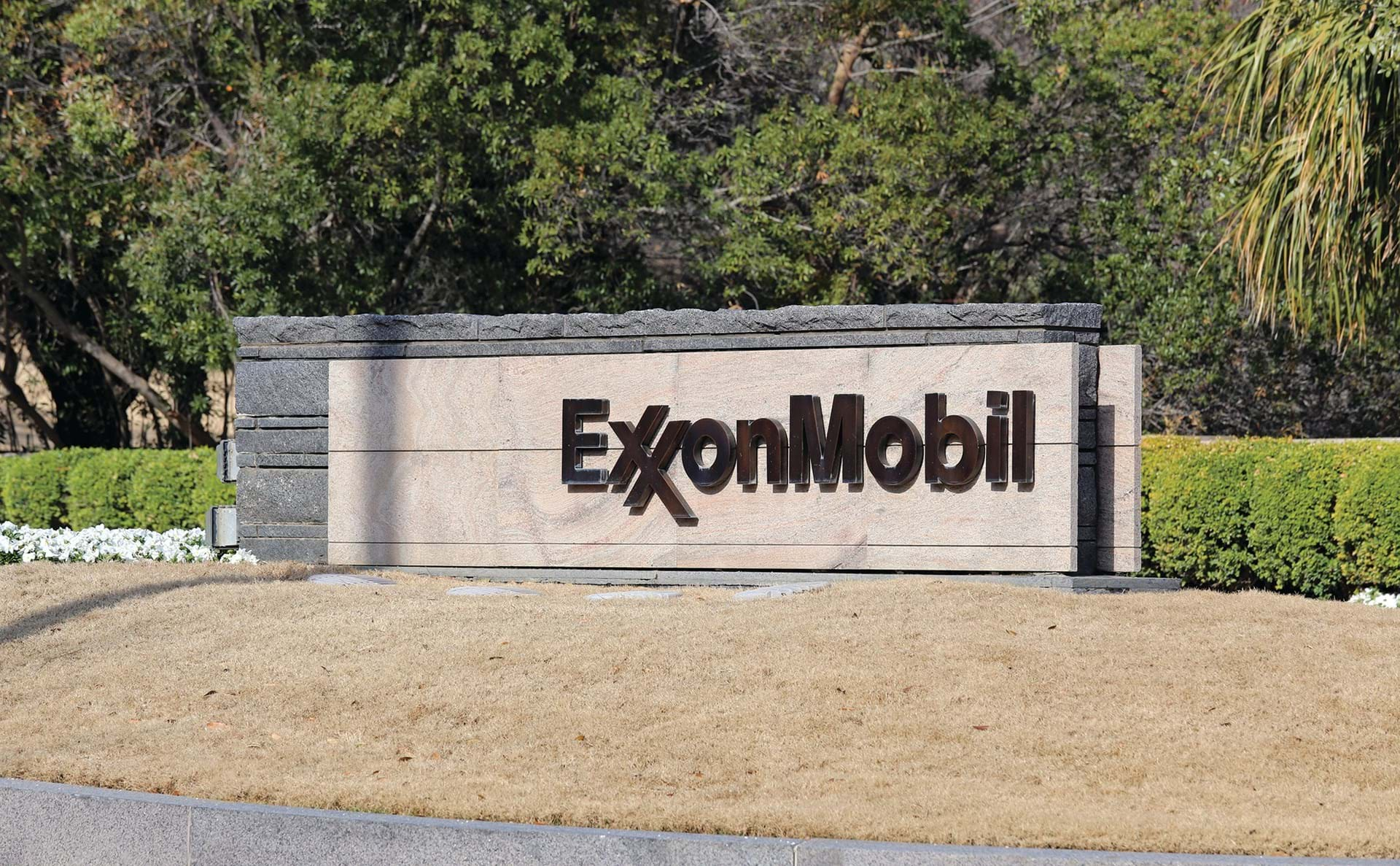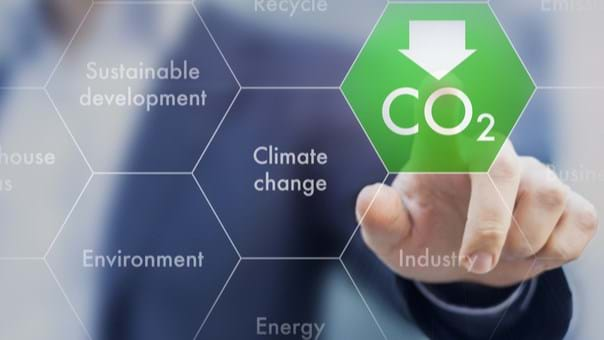ExxonMobil developing roadmaps towards net zero

EXXONMOBIL is developing emission-reduction roadmaps for its major facilities and assets, which will help the company achieve its newly-announced commitment of net zero at its operated assets by 2050.
While environmentalists, investors, and scientists, have welcomed the commitment, they have also criticised the lack of ambition for reducing emissions from customer use of the company’s products (“scope 3” emissions) which account for the majority of Exxon’s emissions.
Exxon has outlined its commitments in Advancing Climate Solutions – 2022 Progress Report, formerly known as the Energy and Carbon Summary. It is aiming to achieve net zero in its scope 1 greenhouse gas (GHG), those emitted from owned and controlled facilities and assets, and scope 2 emissions, which are indirect emissions associated with the purchase of electricity, steam, heat, or cooling.
Its approach centres around developing detailed emission-reduction roadmaps for its major operated assets. This will identify emission reduction opportunities, and investments and policies needed to achieve net zero.
Exxon expects to finalise detailed roadmaps to address about 90% of operations-related GHG emissions by the end of the year, with the remainder following in 2023. These will be tailored to account for facility configuration and maintenance schedules and will be updated as technologies and policies evolve.
In the 2022 progress report, Exxon notes that its 2050 ambition builds on its 2030 emission-reduction plans, which are consistent with Paris-aligned pathways and include the plans for net zero at its Permian Basin. The company’s board is continuing to evaluate and develop longer-term strategy beyond 2030.
Exxon says it has a plan to achieve net zero at its Permian Basin operations by 2030.
This includes electrifying operations using low-carbon power, such as wind, solar, or natural gas with carbon capture and storage (CCS). The company will also expand and accelerate methane mitigation and detection technology, eliminate routine flaring, upgrade equipment, and employ emission offsets.
The company plans to reduce emissions through 2030 compared to 2016, expecting to lower corporate-wide emissions by about 20% (23m t) and upstream emissions by about 30% (15m t). Actions towards its goal include deploying hydrogen, carbon capture and storage (CCS), and use of lower emission fuels in its operations.
To help achieve its net zero goal, the company has, to date, identified more than 150 steps and modifications to apply to its assets in upstream, downstream, and chemical sector operations. Actions which the company are already implementing involve energy efficiency measures, methane mitigation, equipment upgrade, and elimination of venting and routine flaring. Additional reduction opportunities include cogenerating power and steam and electrifying operations using renewable, or lower emission powers.
The company’s initial steps towards net zero also include plans to invest more than US$15bn by 2027 on lower emission initiatives, with the significant portion focussed on biofuels, CCS, and hydrogen.
In Canada, Exxon’s affiliate Imperial Oil will produce 7m bbl/y of renewable diesel at the Strathcona refinery, starting in 2024. Using canola oil as feedstock and blue hydrogen in the hydrotreating process, the facility is expected to reduce transportation-related emissions by 3m t/y. In September 2021, Imperial Oil announced it was advancing plans for a 1bn L/y renewable diesel complex at Strathcona.

As part of a consortium of 11 companies, Exxon is considering deployment of a large-scale CCS hub near Houston, US, which the company says is one of the nation’s most concentrated sources of industrial CO2 emissions. The hub could remove 100m t/y of CO2 from power plants, refineries, and petrochemical plants by 2040. Previously, it was announced that the hub could capture 75m t/y of CO2 by 2040.
Exxon is also advocating supportive policies that it expects will accelerate the deployment of key technologies at a pace and scale that will support net zero. This includes an explicit price on carbon to establish market incentive and encourage investment in lower-emissions technologies. Last year, a then-employee of Exxon, was caught on camera implying that Exxon falsely backs carbon tax, using it as an “advocacy tool”.
The company has not announced an ambition towards net zero in its scope 3 emissions, but says it is committed to helping society reduce overall GHG emissions by decreasing the company’s emissions and developing and deploying emission-reducing technologies and products. In 2020, ExxonMobil’s scope 3 emissions were estimated at 540m t/y while scope 1 and 2 emissions totalled 112m t/y CO2e.
It is worth noting that Dan Woods, CEO of ExxonMobil, told the Financial Times that the company could continue expanding oil and gas production in the coming years and still meet its emissions reductions goal at its operation. He reportedly added that policymakers and society were “not yet on that path and advancing in line with those assumptions”.
Kathy Mulvey of the Union of Concerned Scientists, said: “ExxonMobil’s emissions reduction pledge misses the mark and is too little, too late…By not making any commitment to reduce the emissions that come from burning oil and gas, known as scope 3, ExxonMobil is shifting blame for the bulk of its emissions onto consumers who are using its products exactly as the company intended.
“[The] pledge is another way for ExxonMobil to shirk its full responsibility, and shows the company is more committed to greenwashing than actually tackling the mounting climate crisis it helped cause.”
According to the New York Times, Andrew Logan said that it was a “step forward” but “very modest”. He also said the reliance on biofuels and carbon capture was concerning. Logan is the Senior Director of Oil and Gas at Ceres, a nonprofit which works with investors, companies, and other nonprofits to work towards a sustainable future.
He added: “If it’s betting so much on those technologies that are dependent on outside action, that’s a somewhat risky approach to take.”
“Exxon’s net zero commitment today-something they've long rejected-is the best evidence yet that its new directors are having an impact. Yet until Exxon addresses life cycle emissions, it fails to meet the urgency of the climate crisis.”- @ALoganCeres https://t.co/Gf0vt0T5er
— Ceres (@CeresNews) January 18, 2022
However, Logan also highlighted that this step from ExxonMobil indicates that the net zero commitment is a sign that its “new directors” are having an impact. Last year, three Engine No. 1 nominees were elected on to ExxonMobil’s Board of Directors. Engine No. 1 is an activist investment firm.
Recent Editions
Catch up on the latest news, views and jobs from The Chemical Engineer. Below are the four latest issues. View a wider selection of the archive from within the Magazine section of this site.




